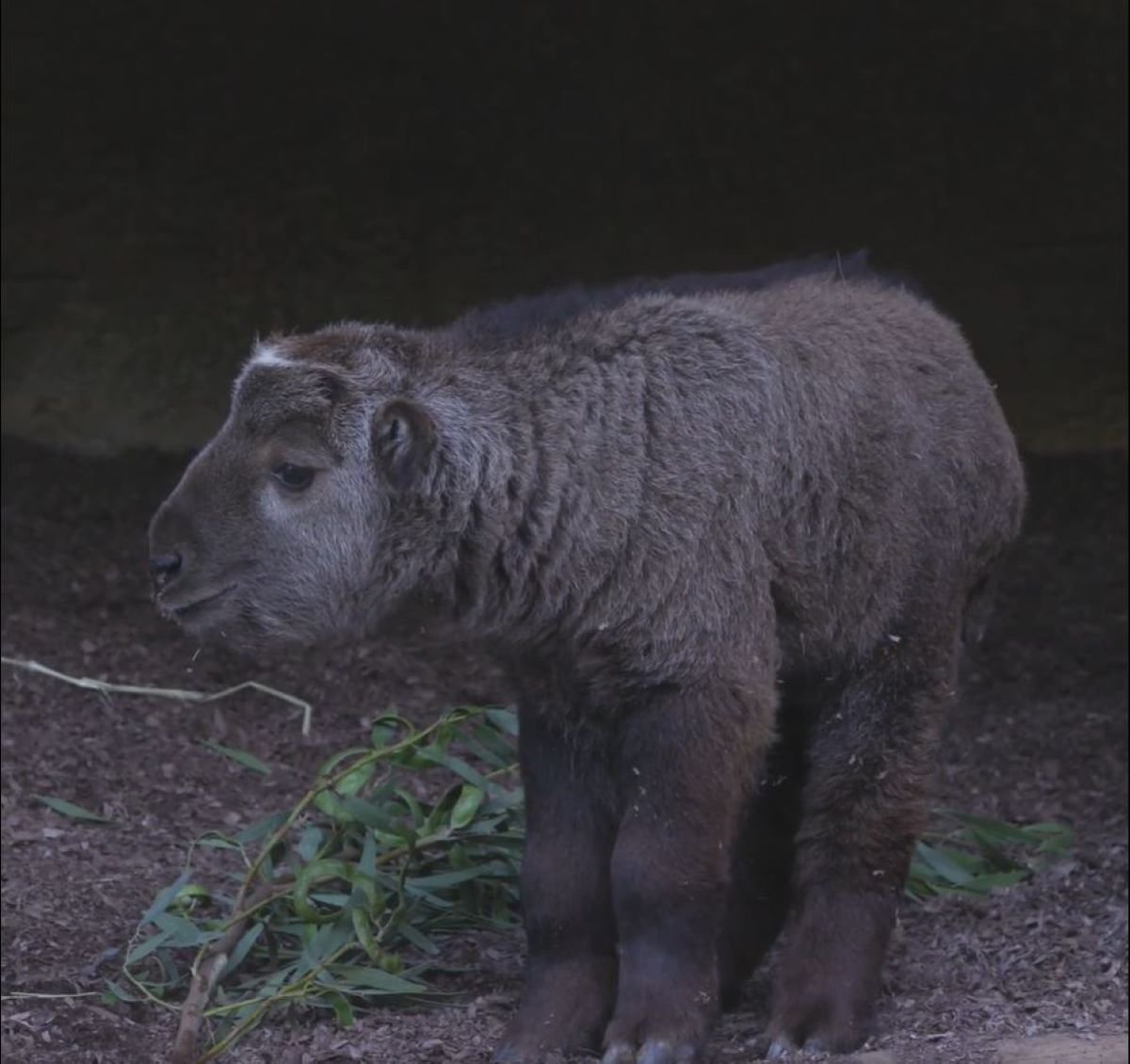Adorable footage shows a golden takin who was recently born at San Diego Zoo, the second one ever too be born in the Western Hemisphere.
Another female takin was born at the zoo before. While this male takin is the second of the species to ever be born in the Western Hemisphere, it is the first-ever male.
The footage shows the golden takin happily jumping up and down a few days after its birth. The kid can then be seen nibbling at a branch and playing with another adult takin.
A spokesperson for San Diego Zoo told Newsweek he has not yet been named and he is so far doing well.
At the moment he is a brownish gray color. However, the zoo said in the comments of a Facebook post that his fur will lighten to a golden color in about six months. Takin kids are born darker to make them less noticeable to predators. They also begin to grow horns at the same time that their fur begins to change. Takin kids are often very lively, while adults are large and slow-moving.

In the Facebook post welcoming the takin, the zoo said: "Welcome to the world, tiny tot."
The male takin lives at the downtown park area at San Diego Zoo.
There are four subspecies of takin; the shensi or golden takin, the Mishmi takin, the Bhutan takin, and the Sichuan takin. In the wild, they are found in the Himalayan mountains.
Takins are a vulnerable species. In Bhutan, China and India, they are protected meaning it is illegal to harm them. In China, the Sichuan takin is even considered a national treasure, similar to the panda. Despite their large size when fully grown, and horns that they use for defense, takins are still often hunted by poachers for their meat. Hunting has caused their populations to dwindle.
According to San Diego Zoo, this type of hunting is difficult to manage as local people may be unaware of the laws in place to protect the species. Because a takin's habitat is so remote, it is difficult to enforce laws in place to manage hunting.
In May 2021, San Diego Zoo welcomed the Western Hemisphere's first-ever takin. The female takin was named Mei Ling, which means "beautiful antelope" in Mandarin.
Takins give birth to one kid, usually in early spring. The young are able to move on their own without help from their mother in a matter of days after birth.
In efforts to conserve the species, San Diego zoo introduced a takin breeding program, which it says has been very successful. The zoo's research helps inform scientists on how to better protect the species in their native habitat, the zoo said on its website.
Uncommon Knowledge
Newsweek is committed to challenging conventional wisdom and finding connections in the search for common ground.
Newsweek is committed to challenging conventional wisdom and finding connections in the search for common ground.
About the writer
Robyn White is a Newsweek Nature Reporter based in London, UK. Her focus is reporting on wildlife, science and the ... Read more
To read how Newsweek uses AI as a newsroom tool, Click here.








